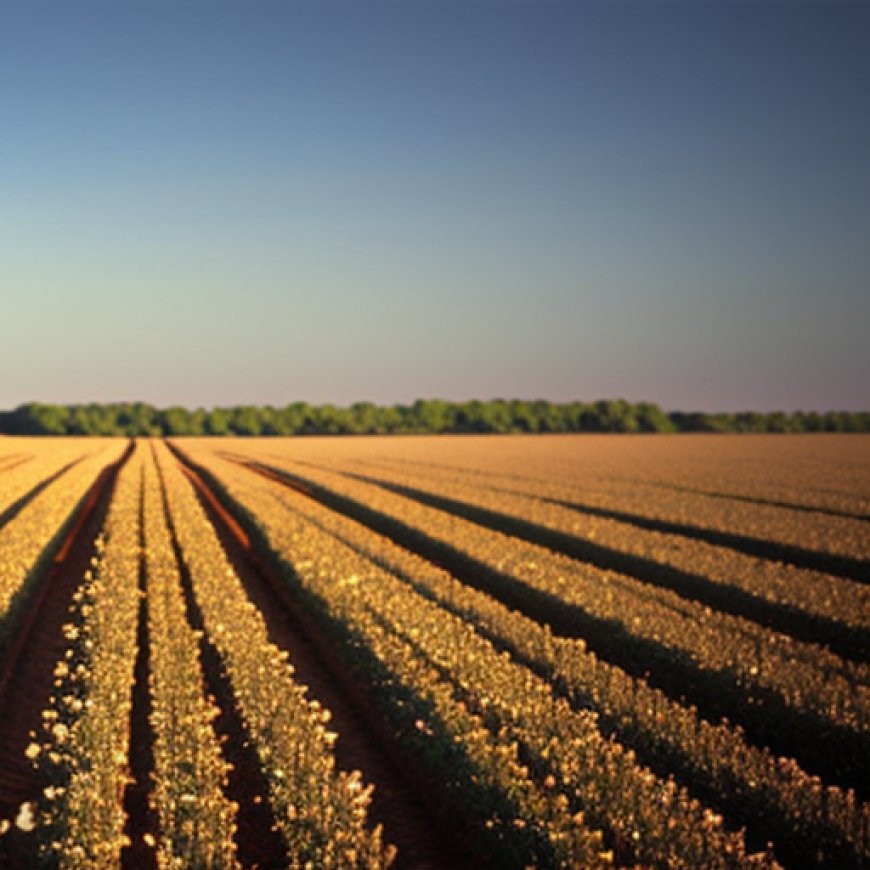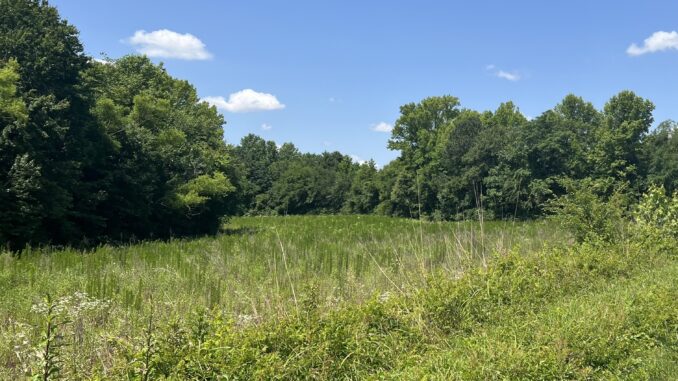NC Dept. of Agriculture announces availability of Farmland Preservation grants | The North State Journal
NC Dept. of Agriculture announces availability of Farmland ... North State Journal


North Carolina Farmland Preservation Grants Now Open for Applications


RALEIGH — North Carolina Agriculture Commissioner Steve Troxler has announced that applications for farmland preservation grants are now open. The application process closes on Dec. 18 at 5:00 p.m.
According to Troxler, “Investments in farmland preservation are more important than ever. In the face of population growth and development pressure, these grants are critical in preserving North Carolina’s agricultural economy and ensuring food security for future generations.”
The N.C. Agricultural Development and Farmland Preservation Trust Fund
The grants are funded through the N.C. Agricultural Development and Farmland Preservation Trust Fund.
Preserving Family Farms
Preserving family farms is one of Troxler’s top priorities. In March 2005, he delivered his “Agricultural Development and Farmland Preservation Strategy” to the General Assembly. During that legislative session, the General Assembly passed House Bill 607 establishing the Agricultural Development and Farmland Preservation Trust Fund.
Local Agricultural Growth Zones (AGZ)
County governments and conservation nonprofit groups can also apply for funding for a new option called Local Agricultural Growth Zones (AGZ) aimed at enhancing local investments in agricultural conservation easements through matching funds from the state.
Local AGZs are areas of concentrated agricultural conservation easements. By protecting AGZ easements from development, a “buffer” can be created between urban and agricultural areas. Per Troxler’s grant announcement citing research by the American Farmland Trust, “large blocks of permanently protected land are one of the most effective sprawl management tools.”
Application Requirements
- When applying, AGZ applications must include a cash contribution for agricultural conservation easement purchase “equal to or greater than the ADFP Trust Fund grant request” for agricultural conservation easement purchase.
- Those who qualify can request up to $2 million per Local AGZ application.
Per Troxler’s announcement, landowners interested in preserving their farms through conservation easements must work with county governments or land trusts to apply for grant funds.
How to Apply
- Grant applications as well as rules and information packets are available online at www.ncadfp.org/Cycle17.htm.
SDGs, Targets, and Indicators
-
SDG 2: Zero Hunger
- Target 2.4: By 2030, ensure sustainable food production systems and implement resilient agricultural practices that increase productivity and production, that help maintain ecosystems, that strengthen capacity for adaptation to climate change, extreme weather, drought, flooding, and other disasters, and that progressively improve land and soil quality.
- Indicator 2.4.1: Proportion of agricultural area under productive and sustainable agriculture.
-
SDG 11: Sustainable Cities and Communities
- Target 11.3: By 2030, enhance inclusive and sustainable urbanization and capacity for participatory, integrated, and sustainable human settlement planning and management in all countries.
- Indicator 11.3.1: Ratio of land consumption rate to population growth rate.
-
SDG 15: Life on Land
- Target 15.1: By 2020, ensure the conservation, restoration, and sustainable use of terrestrial and inland freshwater ecosystems and their services, in particular forests, wetlands, mountains, and drylands, in line with obligations under international agreements.
- Indicator 15.1.1: Forest area as a proportion of total land area.
Table: SDGs, Targets, and Indicators
| SDGs | Targets | Indicators |
|---|---|---|
| SDG 2: Zero Hunger | Target 2.4: By 2030, ensure sustainable food production systems and implement resilient agricultural practices that increase productivity and production, that help maintain ecosystems, that strengthen capacity for adaptation to climate change, extreme weather, drought, flooding, and other disasters, and that progressively improve land and soil quality. | Indicator 2.4.1: Proportion of agricultural area under productive and sustainable agriculture. |
| SDG 11: Sustainable Cities and Communities | Target 11.3: By 2030, enhance inclusive and sustainable urbanization and capacity for participatory, integrated, and sustainable human settlement planning and management in all countries. | Indicator 11.3.1: Ratio of land consumption rate to population growth rate. |
| SDG 15: Life on Land | Target 15.1: By 2020, ensure the conservation, restoration, and sustainable use of terrestrial and inland freshwater ecosystems and their services, in particular forests, wetlands, mountains, and drylands, in line with obligations under international agreements. | Indicator 15.1.1: Forest area as a proportion of total land area. |
Analysis
The issues highlighted in the article are connected to the following SDGs:
- SDG 2: Zero Hunger
- SDG 11: Sustainable Cities and Communities
- SDG 15: Life on Land
Based on the article’s content, the specific targets under these SDGs can be identified as:
- Target 2.4: By 2030, ensure sustainable food production systems and implement resilient agricultural practices that increase productivity and production, that help maintain ecosystems, that strengthen capacity for adaptation to climate change, extreme weather, drought, flooding, and other disasters, and that progressively improve land and soil quality.
- Target 11.3: By 2030, enhance inclusive and sustainable urbanization and capacity for participatory, integrated, and sustainable human settlement planning and management in all countries.
- Target 15.1: By 2020, ensure the conservation, restoration, and sustainable use of terrestrial and inland freshwater ecosystems and their services, in particular forests, wetlands, mountains, and drylands, in line with obligations under international agreements.
The indicators mentioned or implied in the article that can be used to measure progress towards the identified targets are:
- Indicator 2.4.1: Proportion of agricultural area under productive and sustainable agriculture.
- Indicator 11.3.1: Ratio of land consumption rate to population growth rate.
- Indicator 15.1.1: Forest area as a proportion of total land area.
The article discusses the importance of farmland preservation grants in ensuring food security for future generations (SDG 2). It also mentions the need to protect agricultural areas from development to create a buffer between urban and agricultural areas (SDG 11). Additionally, the article highlights the role of conservation easements in preserving terrestrial ecosystems, such as forests (SDG 15).
Specific targets under these SDGs can be identified based on the article’s content. Target 2.4 focuses on sustainable food production systems and resilient agricultural practices, which aligns with the goal of farmland preservation grants. Target 11.3 emphasizes sustainable urbanization and human settlement planning, which relates to the creation of buffers between urban and agricultural areas. Target 15.1 aims to ensure the conservation and sustainable use of terrestrial ecosystems, including forests, which is supported by the mention of conservation easements.
The article implies indicators that can be used to measure progress towards the identified targets. Indicator 2.4.1 measures the proportion of agricultural area under productive and sustainable agriculture, indicating the extent to which sustainable food production systems are implemented. Indicator 11.3.1 measures the ratio of land consumption rate to population growth rate, providing insights into the effectiveness of sustainable urbanization efforts. Indicator 15.1.1 measures the forest area as a proportion of total land area, indicating progress in the conservation and restoration of terrestrial ecosystems.
Behold! This splendid article springs forth from the wellspring of knowledge, shaped by a wondrous proprietary AI technology that delved into a vast ocean of data, illuminating the path towards the Sustainable Development Goals. Remember that all rights are reserved by SDG Investors LLC, empowering us to champion progress together.
Source: nsjonline.com

Join us, as fellow seekers of change, on a transformative journey at https://sdgtalks.ai/welcome, where you can become a member and actively contribute to shaping a brighter future.







